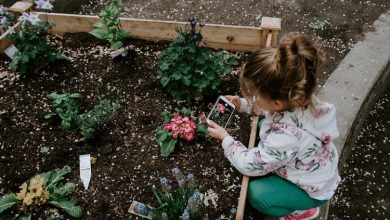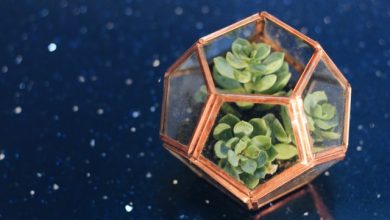How to Make a Garden

Whether for aesthetic reasons or to meet your food needs, you deserve a lovely garden in your space. Therefore, considering your budget, we’ve put together the most straightforward guide to help you make your preferred choice of a garden.
Straight to the day’s business, here’s how to make a garden:
1. Decide on a Garden Type
The process of creating a garden isn’t as effortless as the fresh air you breathe from having one at your backyard or the irreplaceable comfort of plucking your veggies at will. Nevertheless, it’s worth getting your hands dirty. To help make the journey a little easier, you have to first decide on what type of garden you want to make. Below are examples of a garden:
Vegetable Garden
The vegetable garden is an ideal choice for someone who cares more about catering for their spices and vegetables. You can decide to plant tomatoes, carrots, garden eggs, pepper, and so on in a vegetable garden. It only depends on whether your yard size can contain all the plants when they mature.
A vegetable garden requires fertile soil and daily management. Hence, you have to ensure that your area naturally supports the cultivation of the plants you prefer, or you consider investing in fertilizing it.
Flowery Garden
This type of garden is usually more colorful and simply serves ornamental purposes to your environment.
To enjoy the beautiful scenery of your garden all year long, be intentional about what type of flowers to plant. Furthermore, you can plant your flowers to carry different patterns. Again, it’s dependent on the width and breadth of your yard.
A flowery garden is less demanding of fertile soil. So you can consider this if your environment lacks good soil.
Herbs Garden
This type falls between the vegetable and flowery gardens – because it provides consumables and also serves an aesthetic purpose. Nonetheless, like the flowery garden, it can thrive on poor soil and also doesn’t require daily maintenance, unlike the vegetable garden. Some herbs you may plant in your garden include thyme, Rosemary, mint, coriander, and so on.
Also, both vegetable and herbs gardens are often referred to as the kitchen garden since they satisfy household needs.

Made your decision yet? Well, let’s proceed anyway.
2. Choose the Right Location
From time immemorial, the location of anything usually involves some ounce of strategy, and that includes where you locate your garden. Strategizing is necessary because all the garden types need an adequate ray of sun to grow or blossom every day. However, the amount of light a plant needs differs from one plant to another. To be safe rather than sorry, make sure to find out the light requirement of your plants.
Furthermore, situate your garden in an area easily accessible to water. You should ask yourself – how easily can I supply water to this area? Should I plant my garden here? Also, consider a place where daily maintenance wouldn’t be a problem. Choose a flat location whose terrain is friendly on your thighs as you walk around it daily.
Finally, make sure the area will be protected from wind disturbance so that your plants aren’t occasionally disturbed by heavy winds.
3. Make a Garden Layout
Before getting your hands soiled, make a garden layout. Adhering to this tip helps ensure that you’re not planning vaguely. The collection of plants you want in one part of your garden should tally with their soil and light needs. After all, some plants thrive better under a shade. If you’re opting for a flowery garden, make sure your color combinations and patterns are appealing to the eyes.
Besides, select a planting method. You can plant in rows, hills, or beds with consideration to your budget, garden space, and the advantages each technique will serve your plants. For your convenience, your garden layout should include a passage. Also, you may choose to fence it to prevent both household and neighboring pets from straying into your garden.
4. Undertake Soil Management
Now it’s time to get your hands dirty. At this stage of making your garden, you determine if your garden soil will be needing some more ingredients such as compost or organic matter.
Feel the texture of the ground you’re about to plant on to discover the type of soil you have in your location. If it’s loose, light, and has large particles – you have sandy soil. Conversely, loamy soil, which is suitable for most plants, is a combination of both fine and rough particles and contains lots of humus. Other soil types include clay and silts.
If your yard has clay soil, you may consider tilling the ground to allow more aeration and permit the absorption of amendments and organic matter into your soil. After this, you may decide to stop cultivating, given the downside of this practice.
You can also enhance the fertility of your garden regardless of its state. This improvement is necessary, as the more fertile the land, the healthier crops. A piece of advice – it’s better to avoid fertilizers because they may contain chemical compounds that are bad for your plants’ growth. Therefore, it’s better to keep it natural.
Also, evaluate your soil pH. You either purchase a soil kit or simply hire a professional to accurately assess your soil. If any part of your garden has a pH higher than 7.5 or less than 5.5, your plants may become deficient in some nutrients, or they may contain an excess of other nutrients.
Most plants thrive in a pH of 6-7 because they can enjoy a wide range of useful nutrients from the soil. The addition of lime to acidic soil will help increase the soil pH. Conversely, powdered sulfur or aluminum sulfate will reduce the soil pH. So apply as necessary.

5. Start Planting
Now, you may start planting. Note that planting isn’t just a thing you hurriedly do and move on to the next stage. It takes a lot of caution and effort.
Use a spade to dig pits in the ground. The holes should be sufficiently deep and broad to make the plants survive the germination stage. Each plant requires a specific diameter for its pit. Get conversant with them for accuracy. Ensure that you also space your plants satisfactorily. Subsequently, put your seeds or plants into each one of the holes, and cover them. Finally, fill the soil back into position.
6. Mulch
Mulching helps ensure the fertility of your soil. It helps to preserve soil moisture, prevent weed growth, and balance soil temperature. A layer of mulch also helps beautify your land. You can mulch during the early summer when the heat is high. Some of the materials you can use include rubber, organic residues (such as leaves, sawdust, and torn newspapers), and plastic.
Also, ensure to apply the right density of mulch, as some plants only require a thin covering, while others may need thick layers.
7. Fertilize Again
Although this point is only necessary for plants that require lots of soil fertility, it’s safe to consider using some organic matter even after you’ve planted your crops.
8. Water the Garden
It’s necessary to start watering your garden as soon as you plant to enable timely germination. With the help of a hose or sprinkler, you can easily apply water to all the garden areas. You should perform this routine according to the water requirement of each plant.
If you’re starting your garden during the dry season when the soil gets downright thirsty, endeavor to water your plants daily. However, don’t overdo it, because excess hydration can stop the seeds or plants from growing.
Moreover, you can stop watering every day after the plants have sprouted in a few weeks. Consequently, you may switch to watering your plants as you deem necessary.
9. Watch Out for Weeds
Gardeners don’t just pluck out weeds for the sake of beautifying their gardens, and neither would you.
Weeds are robbers who don’t deserve to see the light of the day. They compete actively for your plant’s basic needs: sunlight, soil nutrients, and space. For a new garden, you should weed religiously because your growing plants will be thirsting for every nutrient they can get.
If you’re not planning on purchasing weeding tools, you can choose to weed after a downpour or after watering. It’s an excellent method because the soil gets pretty relaxed and delicate at this point, making your weeding exercise a lot easier. Nevertheless, we advise you to purchase weeding tools for ease and effectiveness. Make sure to uproot the weeds completely – as they have the power to re-germinate if you don’t remove them by their roots.
Subsequently, mulch the areas where you’ve uprooted the weeds to prevent an early or further growth.
Interestingly, some of your plants may not appear as you desire, especially flower plants that serve an aesthetic purpose. So you can also uproot such plants along with the weeds to acquire a more pleasant view.
10. Clean and Maintain Your Garden
After the tasking activity of weeding, clean up the yard immediately, and don’t stop maintaining your garden even after a year or two of making it. Every good thing requires proper maintenance to sustain their wellness. Therefore, don’t stop caring for your garden.
Following these ten steps will help you create your garden as smoothly as possible.



